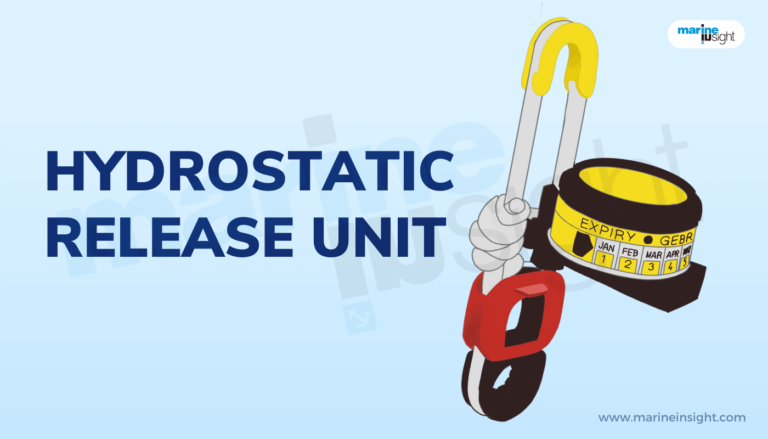Lifeboats and life rafts are crucial for sustaining lives on a vessel during emergencies.
This article explains a very interesting aspect of this topic: the Hydrostatic Release Unit (HRU).
We know that lifeboats and life rafts differ in their applicability, features, and how they cater to saving lives at sea. Generally, a lifeboat is bigger and can hold a significant number of passengers on board in the event of a vessel sinking. On the other hand, a life raft is smaller, primarily inflatable, and portable, and can hold fewer passengers.
A crucial advantage of liferafts is that they can be easily and quickly released in an emergency. This allows them to be reliable means for saving lives, as per the SOLAS requirements mandated for any sea-going vessel.
The speed with which life rafts can be released from onboard makes them a critical component of the Life-Saving Appliances (LSA) indispensable for vessels. Now, all sorts of Life-saving appliances must be released with minimal human effort, that is, with the least human intervention during times of crisis.
This means that when the situation demands, such critical life-saving appliances should be ready to use without delays.
For all practical purposes, automation has been widespread to cater to this necessity. In scenarios when human intervention is cumbersome and even time-consuming, there should be a provision that life-saving devices can be put into action quickly.
The release mechanism is the most critical part of life-saving appliances, enabling them to be safely launched as and when required. Life rafts have depended on one mechanism known as the hydrostatic release unit, or HRU.

An HRU is a safety-release mechanism that automatically launches a life raft into the water during emergencies, like when a vessel is sinking. It is often informally known as the silent sentinel that comes to action to save lives.
The principle of an HRU is pretty simple. It is like a hydrostatic-based switch that activates the release mechanism of the stowed life raft and suspends it so that it can be freely disposed of into the water for rescuing human lives.

How does HRU work?
In the event of a vessel sinkage beyond a certain depth, the increasing water pressure causes the switch of HRU to activate. HRU is connected to the life raft stowage mechanism such that the holding rope or latch gets snapped and releases the raft into the water.
In simple sense, the release mechanism of a liferaft is somewhat similar to the oxygen masks we have in aircraft, where a drop in the cabin pressure triggers them to drop above all the seats and enables the passengers or crew to use them for breathing.
The trigger is air pressure, whereas in this case, it is the hydrostatic or water pressure.
HRUs are strategically placed at designated locations in the hull, mostly encased within sealed casings. Whenever the vessel starts sinking, the rapid change in the draft or waterline, manifested as changing hydrostatic pressure, causes it to activate.
Now, the question is, at what level of sinkage does this work?
The design and serviceability vary from vessel to vessel, but for all practical purposes, the HRUs are designed to work when the change in draft ranges from 1.5 to 4 or 5 meters below the vessel’s maximum design draft.
HRUs are well protected within casings and remain undamaged even in extreme scenarios like fire.
The sequence of operation of an HRU can be briefly explained as follows:
Submersion and activation of HRU
When the vessel sinks or submerges beyond a certain level, the change in hydrostatic pressure head value is captured by the HRU switch due to the water contacting its diaphragm, as it is designed to detect. This triggers the HRU’s activation.
This is then mechanically (sometimes electronically) conveyed to the life raft stowage location unit, where the linkages, straps, and securing chords get snapped.

The life raft then gets released into the water, often after being automatically inflated by compressed air in its chambers for inflatable ones.
This mechanism saves time, effort, and crew deployment. During such events, crew members often rescue and assist other lives on board and are usually lost or incapacitated.
HRU designs must adhere to certain mandated conformities and are often tested before voyages as part of safety checklists. For all practical purposes, vessels must be replaced within a maximum span of 4 to 5 years.
You might also like to read-
Rewrite the content with a different perspective.

